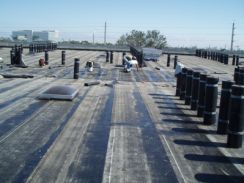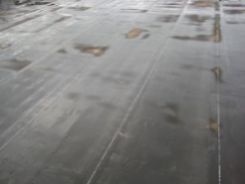Call Us
1-866-968-0479Modified bitumen membranes (MBS) combines the features of a built-up roof with added tensile strength from its polymer modification. Using a reinforced sheet that is prefabricated in the plant, modified bitumen systems require a less labor-intensive application and can be applied in both commercial and certain residential applications.


Modified bitumens generally use a traditional waterproofing medium — asphalt — modified with atactic polypropylene (APP), styrene butadiene styrene (SBS), synthetic rubber or other agents that create a uniform matrix that enhances the physical properties of the asphalt. SBS and APP are the most common bitumen modifiers.
The application of modified bituminous roofing is a construction process that involves the skillful arrangement of several components as specified for the process. Roof performance is determined by factors that include building design, job specifications, materials quality and suitability, application procedures and maintenance. The level of quality in the workmanship during the application process is critical.